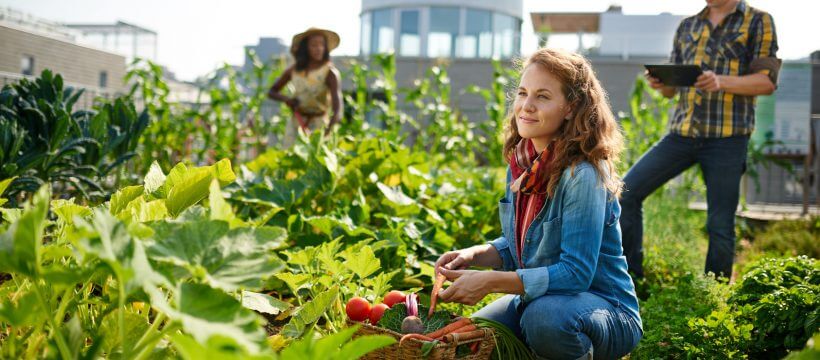
CPRNM® is a comprehensive directory designed to connect individuals and employers with top-tier training
providers including the AHA®, Red Cross®, and other training providers.*
How to Start My Own Vegetable Garden for Beginners
In addition to providing a convenient source of fresh, healthy food, a vegetable garden can also offer an added incentive to get outdoors and develop a better connection with nature. Before you start running through your list of past gardening mishaps, remember that a green thumb isn’t some magic ability great gardeners inherently possess at birth. If you’re willing to put in some time and effort, you too can enjoy your own vegetable garden throughout the summer and into the early fall.
Start Small
You’re not trying to create a farm overnight or win some kind of super gardener award, so keep your garden small and manageable. Start by picking a location that has sufficient access to sunlight, but not so much sun that your veggies are going to dry out before they have a chance to mature. Begin with a couple raised beds and add some more in subsequent years as your confidence grows.
Build Raised Beds
Sometimes referred to as garden boxes, raised beds with loose, compacted soil take some of the guesswork and frustration out of gardening — a major plus for first-time gardeners. In addition to providing good drainage and keeping weeds away, raised beds also create a barrier between what you’re growing and rest of your landscape, which makes it easier to get where you need to go without stepping on stuff.
Searching Gardens In My Area
Take a look at what’s available in your area when searching for stones and rocks to fill your beds. Not only will this make your garden more unique, but it will save you the expense and hassle of hauling that stuff home from your local gardening center. Lightweight wood chips can also work in your beds. If you go with wood chips, you’ll need about 3-4 inches worth in each box.
Understanding My Region
If you’re not fully aware of the ins and outs of the growing season in your area, this is the one time you should make your way to your local garden center to seek input — unless you just ask your neighbors or do a little research online, it’s up to you. Areas in New England, for instance, experience a shorter growing season than areas in the mid-west, so you’ll want to find a spot with greater sun exposure to encourage growth.
Prepare the Garden Area
The place where your boxes will go will need to be prepared, which means removing the grass with a sod machine and a lot of tilling and raking. You’ll also need to place a barrier against weeds, which can be as simple as breaking up some old cardboard boxes or even discarded newspapers and placing it under where the boxes will be located.
Enrich the Soil
Start with a generic soil mix that’s designed for your region. Further, enrich your soil with some bulk compost. If you happen to have really good native soil, that may be all you need. If you’re not sure, go ahead and add the compost. Aged mushroom soil is another good choice for added enrichment.
Start the Seeds First
After your beds are properly prepared, which should really start in the fall, the next step is to figure out what to plant. Anything that can be started from seeds, such as lettuce and string beans, should be planted first. Buy started plants like tomatoes should be planted when you’re sure the seasons have fully transitioned — meaning there’s no longer the risk of a surprise frost.
Water and Weed
Water your beds on a regular basis. Check for overgrowth, especially when the seeded plants start to develop. If you have several beds you need to monitor, consider some type of irrigation and watering system. On hotter summer days, water your beds twice daily; once in the morning when it’s cooler and again in the evening before the sun fully goes down. Remove any weeds, which should be limited because of the cardboard or newspaper underneath the boxes, as necessary to promote healthy growth.
Remember, Have Fun With Your Garden!
Have fun with your garden. If your first attempt at growing vegetables isn’t as successful as you envisioned, consider it a learning experience and have another go at it during the next growing season. With gardening, there’s always room for experimentation with different veggies. If everything goes well, you can even mix it up by devoting a box to spices and adding a flower garden to your yard.
 July 28, 2016
July 28, 2016 






